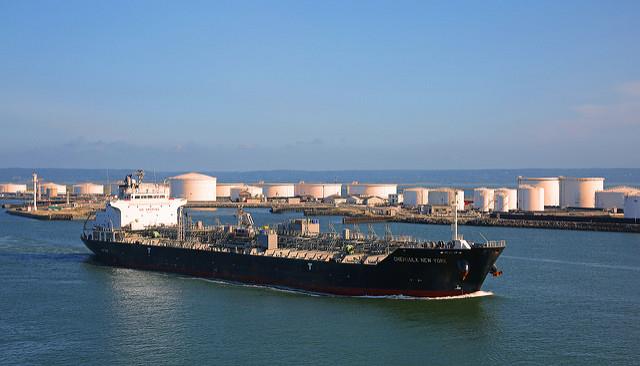
The Commodities Feed: Tug Of War Between Oil Supply Risks And Market Surplus
ICE Brent settled almost 1.2% higher last week after a Friday rally following a Ukrainian attack on the Russian port of Novorossiysk. This led to a temporary suspension of oil exports from the port, which handles approximately 2.2m b/d of oil, including Kazakhstan crude from the Caspian Pipeline Consortium (CPC) terminal. However, reports that port operations resumed saw oil prices coming under pressure early today.
While the oil market is expected to remain in a large surplus through 2026, it is also facing growing supply risks. The scale and intensity of Ukrainian drone attacks on Russian energy infrastructure are picking up. In addition to Friday's attack on Novorossiysk, Ukraine claimed responsibility for a strike overnight on Rosneft's 170k b/d Novokuibyshevsk refinery.
Risks are also emerging elsewhere, with Iran seizing an oil tanker in the Gulf of Oman after it passed through the Strait of Hormuz. The Strait is a key choke point for the global oil market, with around 20m b/d passing through it.
The latest positioning data shows that speculators increased their net long in ICE Brent by 12,636 lots over the last reporting week to 164,867 lots as of last Tuesday. This was predominantly driven by short covering. It suggests that some participants are reluctant to be short at the moment amid supply risks related to uncertainty over sanctions.
Speculators also increased their net long in ICE gasoil over the last week amid growing concerns over tightness in the middle distillate market. Speculators purchased 11,797 lots, leaving them with a net long position of 98,286 lots. The impact of sanctions on Russian diesel exports, along with continued Ukrainian drone attacks on Russian refineries, means tightness concerns are unlikely to disappear anytime soon, particularly as we head deeper into winter.
Metals – Complex under pressureLME copper and aluminium pared weekly gains as China's economy cooled more than expected in October. Record-low investment and slower industrial growth compounded already weak consumer demand. Copper saw a little more than a 1% weekly gain in London, extending a year-to-date rally of over 20%. This is being driven by supply disruptions and trade risks linked to potential US tariffs. Some relief emerged as Freeport-McMoRan resumed partial operations at Indonesia's Grasberg mine after a fatal accident halted output in September. Aluminium held modest weekly gains, supported by concerns that Chinese smelters are nearing government-imposed capacity limits, constraining supply. Primary aluminium output in October reached 3.8mt (+0.4% year-on-year), but fell 9% from September.
The latest data from the Shanghai Futures Exchange (SHFE) shows weekly inventories for base metals -- except copper -- rose over the reporting period. Copper stocks declined for the fourth consecutive week, down 5,628 tonnes to 109,407 tonnes as of Friday. Aluminium inventories increased by 1,564 tonnes to 114,899 tonnes after four weeks of declines. Lead stocks rose by 4,208 tonnes for a second straight week to 42,790 tonnes. Nickel and zinc inventories also climbed, reaching 40,573 tonnes (+9.1% week on week) and 100,892 tonnes (+0.7% WoW), respectively.
Agriculture – India set to resume wheat exportsRecent reports suggest that India may resume wheat product exports (wheat flour and semolina) after more than three years of curbs. This reflects strong domestic supplies and an expected bumper harvest. The Ministry of Commerce and Industry is expected to initially permit 1mt of shipments. This follows India's recent approval of 1.5mt of sugar exports over the 2025/26 season.
The latest fortnightly report from the Brazilian Sugarcane and Bioenergy Industry Association (UNICA) shows sugarcane crushing in Central-South Brazil stood at 31.1mt in the second half of October, an increase of 14.3% YoY. Sugar output over this period rose 16.4% YoY to 2.1mt. Meanwhile, the sugar mix in CS Brazil over the fortnight was 46.02%. That's up slightly from 45.9% a year ago, but down from the previous fortnight. The cumulative cane crush so far this season still lags last year, down 2% to stand at 556mt, while cumulative sugar production totals 38.1mt, up 1.6% YoY.

Legal Disclaimer:
MENAFN provides the
information “as is” without warranty of any kind. We do not accept
any responsibility or liability for the accuracy, content, images,
videos, licenses, completeness, legality, or reliability of the information
contained in this article. If you have any complaints or copyright
issues related to this article, kindly contact the provider above.


















Comments
No comment